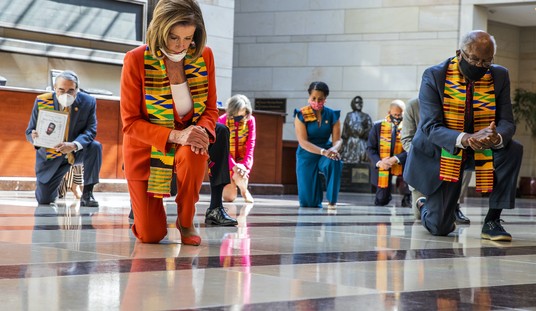Have Democrats made a big comeback in the final days of the midterm election? Barack Obama has conducted a barnstorming tour — mainly of safely-blue districts — attempting to fire up the base for most of this month. Democrats keep declaring that the party’s base has responded with enough force to blunt Republican gains on Tuesday. However, Gallup has conducted another demographic survey of likely voters — and find that very little has changed in the past three weeks:
Gallup’s latest figures on the composition of the 2010 electorate suggest that, consistent with an earlier Gallup report, those voting in this year’s congressional elections across the country will be similar in gender, age, and education to 2006 voters. At the same time, they will be substantially more Republican in their party orientation, and more conservative than has been the case in the past several midterms.
The current and historical likely voter data reviewed here assume an approximately 40% turnout rate among national adults for each election, close to the typical turnout rate recorded in recent midterm years. (Gallup has also calculated the 2010 congressional vote using an assumption of higher turnout.)
Specifically, 55% of likely voters in Gallup’s Oct. 14-24, 2010, polling are Republicans and independents who lean Republican. This is higher than the Republican showing in the past four midterm elections, although not too dissimilar to the 51% found in 2002. The corollary of this is that the 40% of likely voters now identifying as Democratic is the lowest such percentage of the past several midterms.
Notably, this year’s high Republican representation among likely voters stems mainly from a substantial increase in Republican-leaning independents in the likely voter pool — now at 16% — reflecting the broader shift toward the Republican Party among independents evident since 2009.
At the beginning of the month, Gallup found that likely voters in the smaller-turnout model favored Republicans by 18 points, 57/39, with 4% either choosing neither party or undecided. After three weeks of tens of millions of dollars, presidential stumping, and even Bill Clinton attempting to stem the tide, the numbers have moved — but only within the margin of error. The survey now shows a 15-point gap, more than twice the lead in any midterm going back to 1994, 55/40.
We have experienced two “wave” elections in the previous sixteen years, 1994 and 2006. In the first, the GOP led by five points in the final Gallup survey, 49/44, with self-described moderates leading the charge, 48% to 40% for conservatives and 12% for liberals. In 2006, Democrats held a seven-point advantage in likely voters, while conservatives made up the plurality at 42%, moderates trailed at 37%, and liberals hit their apex at 21%. Liberals this year will be 20% of likely voters, but conservatives will hit their highest level within this period at 48%, and moderates will hit their lowest level in the same time frame at 32%. The middle has gotten squeezed as the Right and Left get more muscular.
Those numbers actually have changed over the past three weeks, however. At the beginning of the month, those numbers looked even more polarized, with 57% of the likely-voter pool being conservatives, 18% liberals, and 27% moderates. The difference among liberals is within the MOE, but more statistically significant for conservatives (-9) and moderates (+5). That does indicate that the pool of likely voters may have expanded this month as more moderates engage, hinting at a higher turnout — but almost no difference at all in outcome. And that is very, very bad news for Democrats.








Join the conversation as a VIP Member